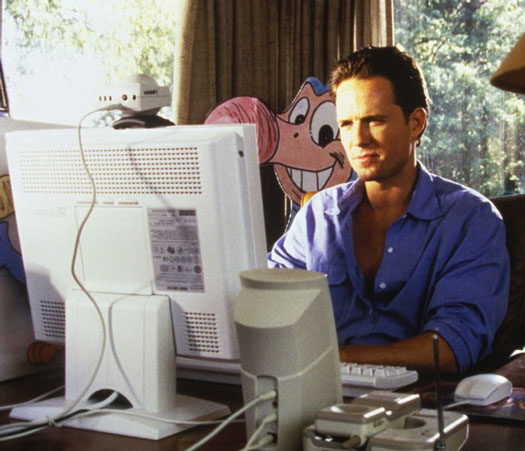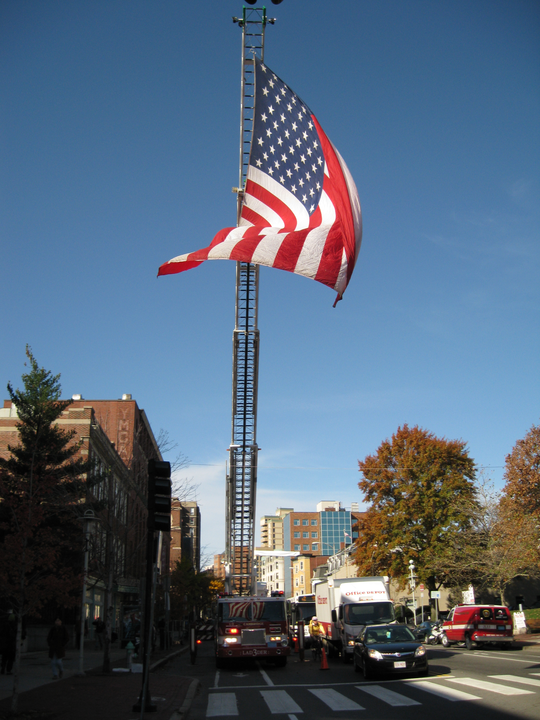Starting with cinematography the sequence starts straight away with a long shot of Ballad in Iraq, this shows immediately to the audience that it is a deserted place but also a great place for terrorists or dangerous criminals to hide so already a sense of what is to come from this long shot. The camera then pans right but very slowly as it shows the car moving down the road, gives the sense of anticipation and showing will the road ever stop demonstrating loneliness. Then the camera is crabbing as it follows Leonardo DiCaprio to the rock, this is used to give the sense of danger that he needs to hide behind a rock to avoid been seen, this increases adrenaline and makes you want to watch. Panning and crabbing camera movements are used frequently in this film because the producer wanted to make it a spy film so they frequently follow subjects to give that sense of following without been seen and they do it extremely well. Next, there is a point of view shot of what he is seeing through the binoculars but then the camera zooms in on what he is seeing now the zoom does not feature very often in film, as it is too simple. I was quite surprised when the zooms were used but this was for a purpose to show the audience mainly why they are there. Now it is a close up of a bunch of cd, tapes and files been burned so obviously showing they do not want these tapes found building up to show the audience that these are dangerous people. The camera then returns to Leonardo with a close up and showing him talk on his radio this gives the sense of action and that he has seen something he does not like and it is time to act. Next, the camera closes up on both characters but mainly the weapons especially the sniper rifle, this tells the audience they are now getting what they are waiting for an action scene. Tracking is the next camera movement as it follows DiCaprio walk down the road dressed as an Arab, this is to show now that he is out in the open he cannot hide anymore and the camera movement make it like a spy film brilliantly. Then objective positioning as it blurs out DiCaprio and shows Bassam with the sniper rifle, this makes DiCaprio look vulnerable as it makes him look small and dependent on his friend to cover him. Another close up is used however, on the man burning the cd, this shows confusion and wonders who it is and this shows the audience the hostility of the situation. Furthermore you then see the man look round to his friend, this now increases hostility as DiCaprio is outnumbered, this gives a sense of shock to the audience that DiCaprio could be captured or killed. Then their is a close up on DiCaprio showing the audience that he knows as well he is outnumbered after looking at two ak-47 assault rifles. A close up is used again as he explains where he is from but he knows he is running into trouble as soon as he says he is from Baghdad, Rasafa. In addition another close up is used but this time on the man eating as he attempts to pick up his gun, this puts the adrenaline on edge, you are wondering exactly when will it start. Then two close ups are in used in about 2 seconds as it shows Bassam with the rifle and then on the ak-47 this shows sort of like a gun duel shows the audience someone will die but you don’t know who. Then the audience get they wanted, a gunfight but however the camera seems to stay still for most of the action here as it tries to catch it all without moving, the producers did not want you to miss a bit. You then get several close ups of armed helicopters showing the action is going to get better and then a long shot of bassam driving fast down the road to the safe house, shows they need to get out of there quick before the airstrike hits. You next a close up of the helicopters from the front showing how heavily armed they are, this shows to the audience that they wont be just doing the airstrike they may be needed for support on the ground . The camera then twice crabs first to the right and then to the left as they attempt to evade the explosions. You then have more crabbing as it then follows the enemy vehicles coming to the scene, this is used to show the action is not over yet and builds adrenaline even higher makes you feel you know how dangerous this situation is. In addition, you then get a close up of a G-36C assault rifle. Then crabbing along the weapon as DiCaprio fires it from his vehicle, this gives a feeling of that you are the one firing the gun makes you feel involved in the action, this was the producers intention to feel as much part of the film as the actors. There is then a high angle shot of the cars, makes them feel vulnerable and small compared to the helicopters which are made to look the dominant force. Then another close up of Bassam as he desperately attempts to get help, this gives the audience a sense of shock will the helicopters arrive in time to save them, the producer does this on purpose to build suspense. You then get a low angle shot from the enemy vehicle of the helicopters, showing to the audience the vulnerability of the vehicles. What happens next is that you then get a close up of a RPG-7 this shows to the audience they were prepared if they were to run into trouble. The sequence finally ends with a close up of Bassam as he is killed from an RPG whereas you see from a low angle shot the helicopters take out the remaining car, this shows that the action is over but unfortunately one of the characters has been killed.
Finally, I will talk briefly about the sound used in this sequence. In this sequence, both diagetic and non-diagetic sounds are used but it seems more non-diagetic is used. First of all main diagetic sound is the speech. They mix it around at first the speech is calm as he talks to Bassam. However then the speech becomes more aggressive in the middle for example “We are in some pretty serious fucking trouble here”, this sound delivery and pace used to make it seem more realistic and how you would actually react in a real life situation like that. Moving onto non-diagetic sound the main one is the music. They make the music quiet at some points similar to the speech so they keep consistency between styles. However the music is loudest always when it is showing the helicopters, the producer does it on purpose to show the audience that the helicopters are the most strongest in the sequence and the music emphasises it. I like the music because it helps demonstrate the power of the helicopters but also the fact that it builds up just like the adrenaline in the audience so they really make it work well with sound in intensifying the action. Finally, the other use of exaggerated sound is the gunfire. This has a purpose just like the music as they use it to build up adrenaline and to intensify what is going on. They also exaggerate reloading of magazines on the weapons and explosions but this helps to make it seem the fast-paced action packed ride that it is supposed to be.
This sequence overall was extremely good to watch. When I first saw it, I thought it was thrilling and exciting as the building up tension was brilliant. The cinematography and sound really added to that as it made me feel more as if I was in the film myself witnessing these situations. It made me realise the amount of effort that goes in behind the scenes to try and make the action look as realistic as possible and not to over exaggerate too much.

 This is an exampole of a close up
This is an exampole of a close up This is an example of a medium shot size you cant clearly see everything on his face
This is an example of a medium shot size you cant clearly see everything on his face This is an example of a long shot
This is an example of a long shot Example of a low angle shot
Example of a low angle shot Example of a high angle shot- makes the subject look weak or vulnerable
Example of a high angle shot- makes the subject look weak or vulnerable


